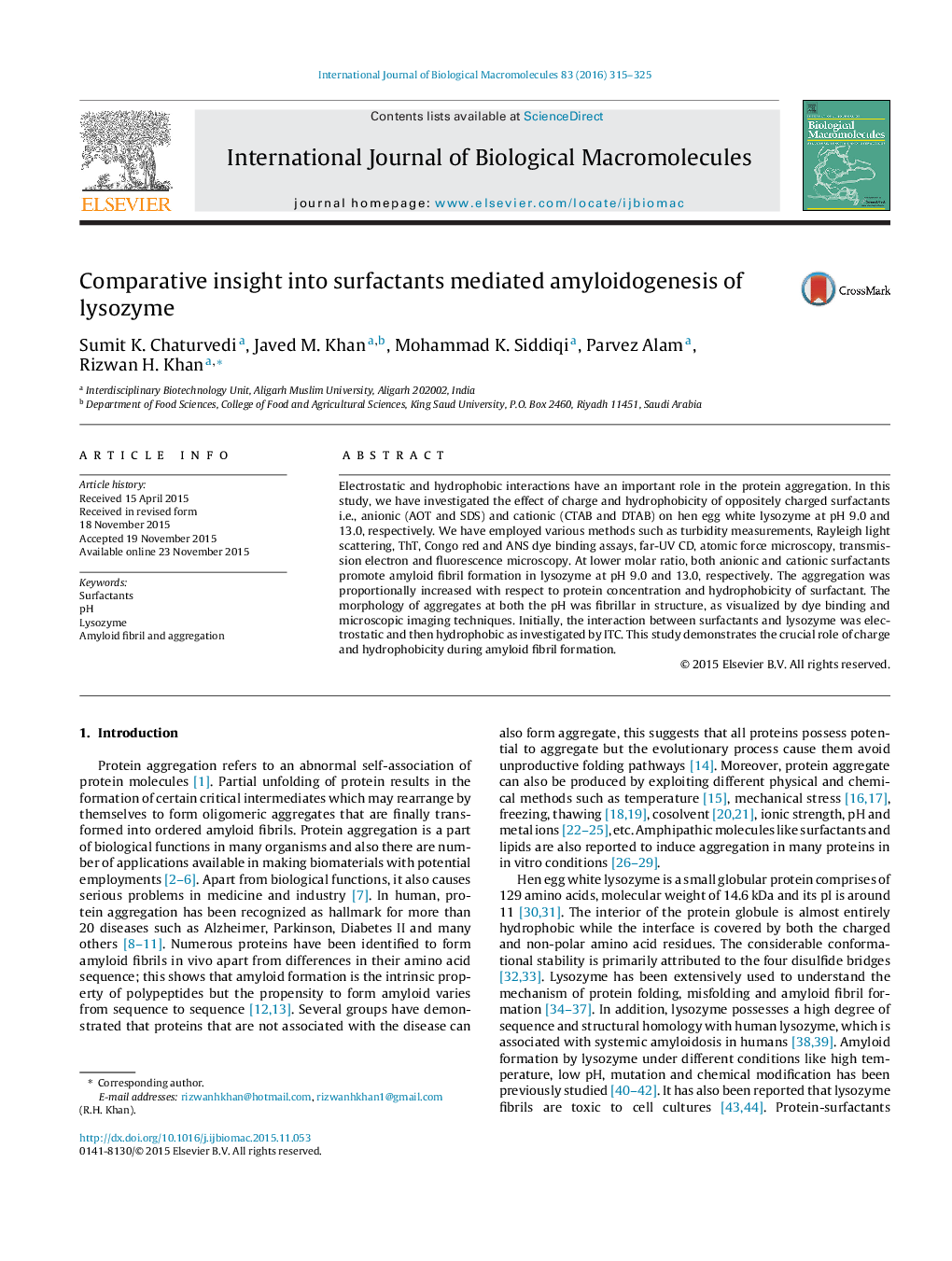| Article ID | Journal | Published Year | Pages | File Type |
|---|---|---|---|---|
| 1986073 | International Journal of Biological Macromolecules | 2016 | 11 Pages |
Electrostatic and hydrophobic interactions have an important role in the protein aggregation. In this study, we have investigated the effect of charge and hydrophobicity of oppositely charged surfactants i.e., anionic (AOT and SDS) and cationic (CTAB and DTAB) on hen egg white lysozyme at pH 9.0 and 13.0, respectively. We have employed various methods such as turbidity measurements, Rayleigh light scattering, ThT, Congo red and ANS dye binding assays, far-UV CD, atomic force microscopy, transmission electron and fluorescence microscopy. At lower molar ratio, both anionic and cationic surfactants promote amyloid fibril formation in lysozyme at pH 9.0 and 13.0, respectively. The aggregation was proportionally increased with respect to protein concentration and hydrophobicity of surfactant. The morphology of aggregates at both the pH was fibrillar in structure, as visualized by dye binding and microscopic imaging techniques. Initially, the interaction between surfactants and lysozyme was electrostatic and then hydrophobic as investigated by ITC. This study demonstrates the crucial role of charge and hydrophobicity during amyloid fibril formation.
